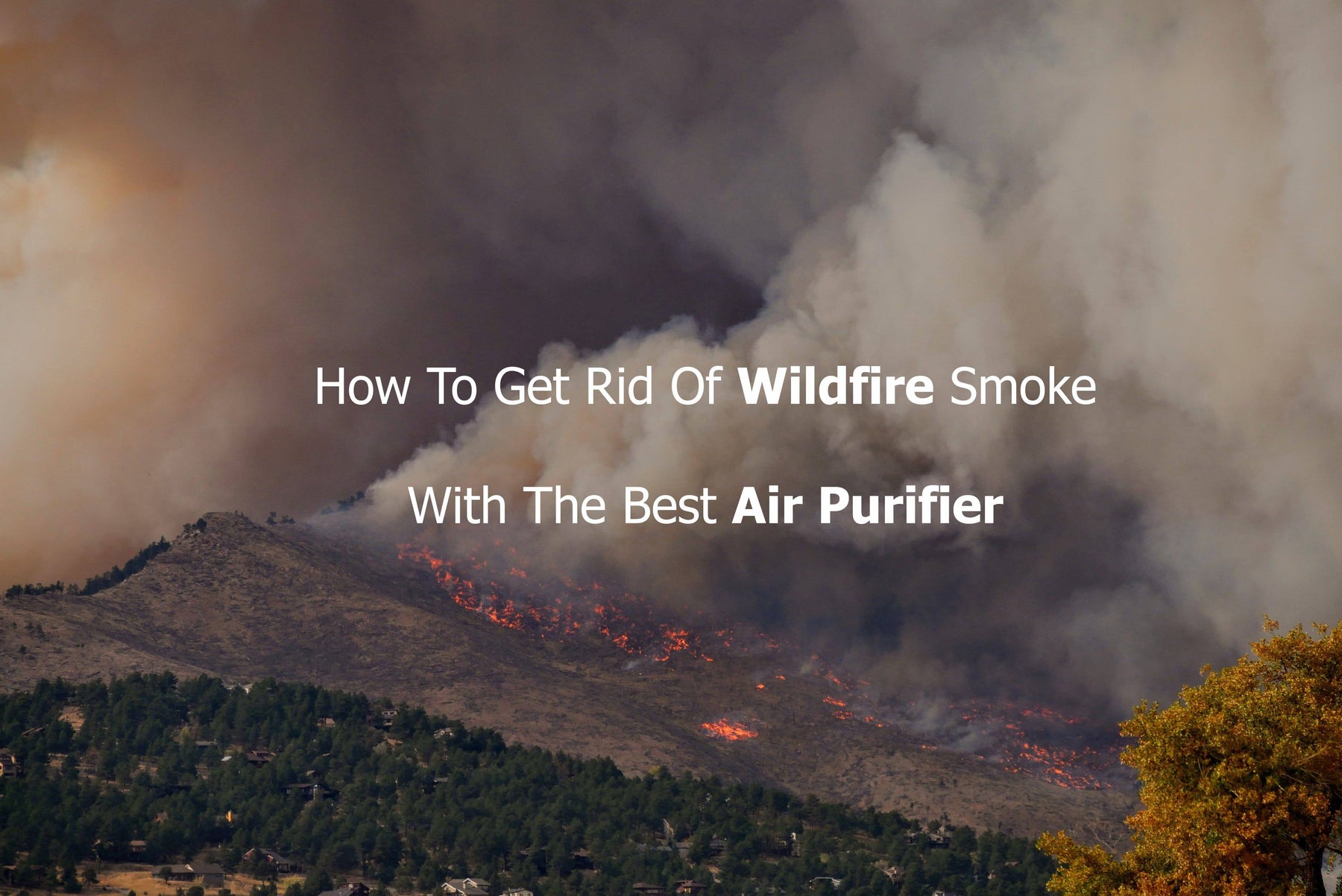
How To Get Rid Of Wildfire Smoke With The Best Air Purifier
How to Get Rid of Wildfire Smoke With the Best Air Purifier?
We are at risk of health problems from wildfire smoke. For cleaner indoor air, air purifiers filter out harmful smoke particulates that are dangerous for inhalation.
Smoke from wildfires can cause dangerous air quality conditions during wildfire season. Burning plants and other materials produce harmful gases and fine particles in wildfire smoke. Despite their small size, these particles penetrate the lungs, which is why they present a health risk. The use of air purifiers is key to reducing wildfire smoke exposure. But how do you pick the best air purifier for wildfires?
Air purifiers can improve indoor air quality by reducing airborne particle levels. Wildfire smoke can be reduced with an air purifier equipped with a high-efficiency particulate air (HEPA) filter.
How to Choose the Best Air Purifiers for Wildfire Smoke
Because wildfire smoke can pose as a health hazard, choosing your purifiers for wildfire smoke carefully is essential. It is crucial to have an air purifier on hand during smoky seasons, but they are helpful year-round as well. Additionally, the best air purifiers remove common pollutants and allergens like pollen, dust, and pet dander.
An air purifier designed to withstand the effects of wildfire smoke must-have features like filter-type and a large coverage area. In addition to these, air quality monitoring, and energy efficiency against the pollutants of wildfire smoke.
Considering that air purifiers are usually found infrequently used rooms, the design and look might also be necessary.
Filter
There are no better air filters than HEPA filters. 0.3 microns and larger particles are captured by HEPA filters 99.97 percent of the time. These pollutants include dust mites waste, pollen, pet dander, mold spores, and smoke.
It is necessary to replace HEPA filters every six to 12 months. It would be best if you were looking for air purifiers that use "true HEPA" filters. It's not uncommon for purifiers labeled "HEPA-like" not to contain an actual HEPA filter. U.S. standards are not always met with such filters. As per the Department of Energy specifications, 0.3-micron particles must be filtered 99.97 percent of the time.
Unlike traditional filters, HEPA filters trap dust particles rather than gases and odors. Activated carbon is a good option for filtering smoke. Airborne molecules like odors and gases are captured and held by activated carbon filters. Among their uses are eliminating dog odors and cooking smells in the home. During wildfire smoke, some gaseous molecules can also be captured and reduced.
Coverage Area
In a closed room, air purifiers clean the air. The clean air delivery rate (CADR) of an air purifier should be adequate for the room in which it will be installed.
In cubic feet per minute, CADR measures how much clean air a purifier provides. Filtration of particles and not the filtration of gas or odors determines the system's efficiency. With a higher CADR, the purifier can filter the air faster and in a larger room.
If your space requires a high CADR, then choose a suitable air purifier. CADRs are usually translated into maximum recommended room size by manufacturers.
EPA Rating
Smoke from wildfires makes air purifiers more effective when they run around the clock. It will be less expensive to operate and run a 24-hour air purifier if Energy Star is certified.
Energy Star-certifies products that meet EPA guidelines for energy efficiency. The energy efficiency of these air purifiers is significantly higher than that of standard purifiers.
Air Quality Indicator
It is possible to take real-time air quality measurements using an air quality indicator (AQI) and understand how healthy the air is around you.
It may also display changes in the air quality throughout the day using a built-in air quality indicator. Some air purifiers can be set to adjust settings based on current air quality automatically.
Noise Level
The fan on an air purifier draws in air, so it makes noise while it's operating. Noise levels can be a concern, especially for air purifies used in heavy traffic areas in the house such as living rooms, and bedrooms. Models and fan settings affect the noise level of air purifiers. Louder fans will be set to a higher setting. Buyers can make an informed decision by seeing the noise rating in decibels displayed on some air purifiers.
When choosing an air purifier, choose one that is certified for a bigger room than you need so it can filter air on a lower setting in a smaller space.
Smart Technology
Users can maximize control with smart technology. When the air quality indicator reaches a certain level, some air purifiers trigger automatic programs.
Wireless connectivity, such as Bluetooth, allows remote control. Smartphone apps allow users to control fan speed and other settings remotely. Remotely reading the air quality and filter status may also be provided by apps.
The device can be controlled using a voice assistant like Alexa or Google Home.
Portability
From small travel models to enormous floor models, air purifiers are available in several sizes. Small and light, travel air purifiers are tiny enough for packing in a suitcase. Some are cordless as well.
It is easy to transport a desktop unit to the office because they are relatively light. During wildfire season, people likely spend as much time in the workplace as they do at home. An air purifier for your office can help.
If needed, some purifiers include casters and handles for easy transport. The bedroom, living room, and kitchen are the most commonly used rooms for heavier models.
Additional Features
Multistep filtration systems are standard in air purifiers. As a cost-saving feature, a prefilter is convenient. Prefilters remove large particles so that HEPA filters won't clog. The HEPA filter will last longer as a result. The washable, permanent prefilters on some air purifiers will reduce the need for replacement. Another optional filtration step is an activated carbon filter. HEPA filters are unable to capture pollutants found in wildfire smoke.
It is also essential to think about the frequency and costs of filter replacements. A HEPA filter needs to be replaced now and then. Smoke filters are essential. It also comes with a filter indicator light, which serves as a reminder of changing the filter.
Consider an ozone-free air purifier when shopping for one. Ionic air purifiers and ozone generators can generate ozone gas, which is considered a lung irritant by the EPA. The design of air purifiers installed in living rooms and bedrooms might also be a significant factor to consider.

Leave a comment